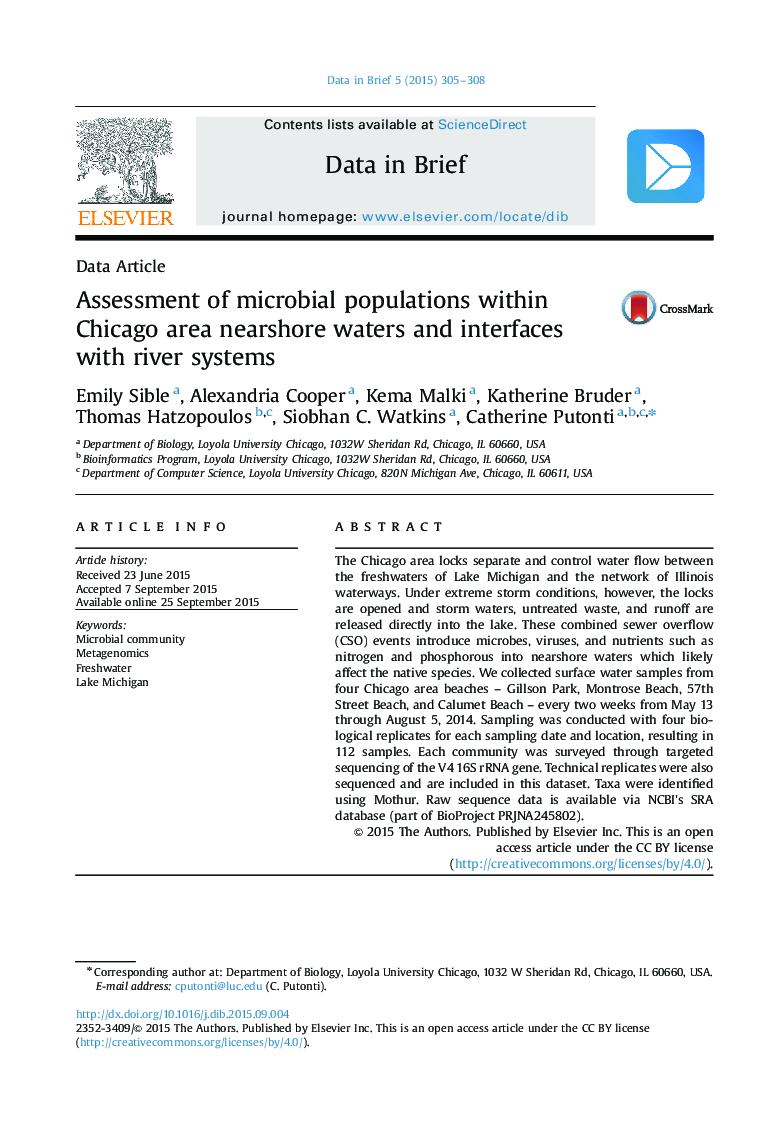| Article ID | Journal | Published Year | Pages | File Type |
|---|---|---|---|---|
| 174884 | Data in Brief | 2015 | 4 Pages |
The Chicago area locks separate and control water flow between the freshwaters of Lake Michigan and the network of Illinois waterways. Under extreme storm conditions, however, the locks are opened and storm waters, untreated waste, and runoff are released directly into the lake. These combined sewer overflow (CSO) events introduce microbes, viruses, and nutrients such as nitrogen and phosphorous into nearshore waters which likely affect the native species. We collected surface water samples from four Chicago area beaches – Gillson Park, Montrose Beach, 57th Street Beach, and Calumet Beach – every two weeks from May 13 through August 5, 2014. Sampling was conducted with four biological replicates for each sampling date and location, resulting in 112 samples. Each community was surveyed through targeted sequencing of the V4 16S rRNA gene. Technical replicates were also sequenced and are included in this dataset. Taxa were identified using Mothur. Raw sequence data is available via NCBI׳s SRA database (part of BioProject PRJNA245802).
